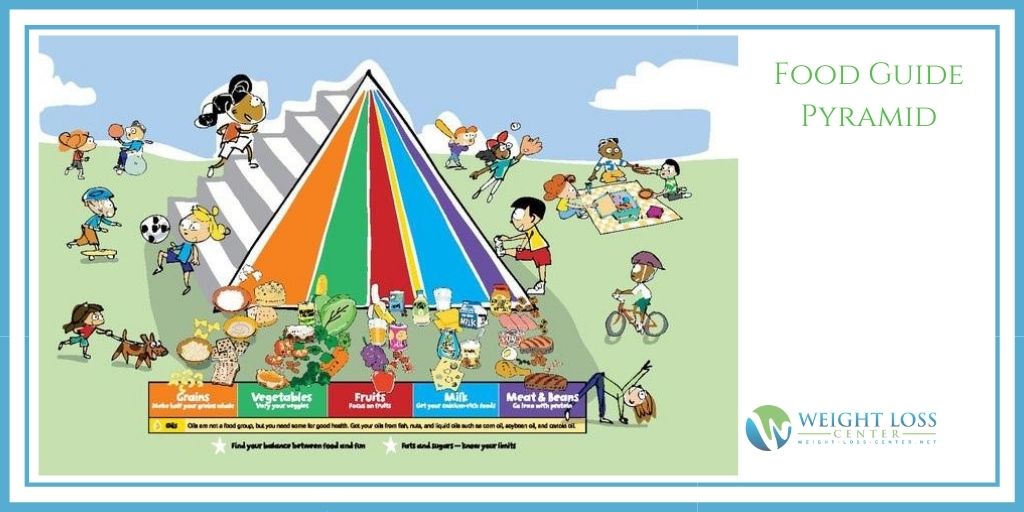
Food Guide Pyramid
- Healthy Eating
- Hits: 8621
The Food Guide Pyramid used to be the US federally recommended nutrition balance for the average American. These guidelines were replaced by MyPlate to offer Americans updated recommendations that were easier to understand and follow.
What Was the Food Guide Pyramid?
The original food guide pyramid was published by the United States Department of Agriculture (USDA) in 1992 as a visual tool and guideline to help consumers more easily figure out how much of which types of food to eat daily, for optimum nutritional health.
By emphasizing healthy choices, following the pyramid recommendations helped to control the number of calories, fats, cholesterol, sugar and sodium in the average American’s personal food plans. As different foods are made up of different nutritional values, no one food group can provide all the beneficial substances you require on a daily basis.
According to the pyramid food guide the firm base of a healthy diet should consisted of eating lots of grains, fruit and vegetables with a strong emphasis on variety.
The History of These Guidelines
The Food Guide Pyramid was developed by the highly renowned Tufts University in Boston Massachusetts in the early nineties and an updated version was re-released in 2005. The new improved version was called MyPyramid and was available to be explored at a government website, MyPyramid.gov, which has since been taken down in favor of the updated ChooseMyPlate.gov.
The fundamental differences between the old and the new charts were that MyPyramid had included exercise, the benefits of moderation, and the use of supplements in the graph, as well as changed measurement directions from “servings” to cups and ounces for better clarification. The term “serving” had been confusing at times because it encompasses so many variables.
The USDA "MyPyramid" Food Guide Pyramid
The food pyramid guide itself was a triangle shaped graphic with different sized colored stripes representing the different food groups. The improved version, MyPyramid had the addition of a person climbing steps up one side of the outer triangle to represent the physical activity component. Here are the guide’s recommendations for each category of food:
- Grains, pasta, cereals: 6 - 11 servings daily
- Vegetables: 3 - 5 servings daily
- Fruit: 2 - 4 servings daily
- Dairy: 2 - 3 servings daily
- Meat, Poultry, Fish, Eggs, Nuts, Beans: 2 - 3 servings daily
- Fats, Oils, Sweets: To be taken sparingly, and not on a daily basis
Dietary Supplements were to be used as dietary extras for an additional nutritional boost and not at any time be used to replace food. The average general number of calories required daily for children under age 6 or a senior adult was about 1600 per day. For older children and most adults, it was around 2200 and for teenage boys or active adult males it was more like 2800. The pyramid guide was to assist you in getting the most nutrition possible from the foods you chose to make up that daily caloric intake.
There seemed to be some effective methodology to the pyramid model as many modified versions, geared to specific dietary needs, had sprung up. Here are some examples:
- The North American Vegetarian Pyramid which is for vegetarians
- The Children’s Food Guide Pyramid
- The Seniors Pyramid for those over the age of seventy
- There are pyramid models available covering ethnic and cultural diets
- The 12 Pyramids are tables specifically based upon age and gender
- The Vegan Pyramid includes only four food groups due to the highly restrictive nature of a vegan lifestyle
- The Harvard School of Public Health offers the Healthy Eating Pyramid as yet another alternative
- The Diabetics Food Pyramid put out by the American Dietetic Association has drawn caution warnings from The American Diabetes Association (the leaders in the field of diabetes) who emphatically do NOT condone this model for diabetics. They quote, “although the Diabetic Food Pyramid correctly follows the FDA recommended food guidelines it is a plan far more suited to non diabetics”. If you are a person with diabetes, check in with the American Diabetes Organization before embracing a pyramid model that may not in your best interests health-wise.
A primary notable concern with the USDA Food Guide Pyramid was political in nature. The USDA made different recommendations in terms of the number of cups from each food group when compared to what The World Health Organization deemed necessary. The differences were not slight but were sometimes twice the WHO’s recommendations. The concerns were that the USDA (which is a federal governmental body) may have been bowing to pressure from US food production agencies regarding those amounts.














